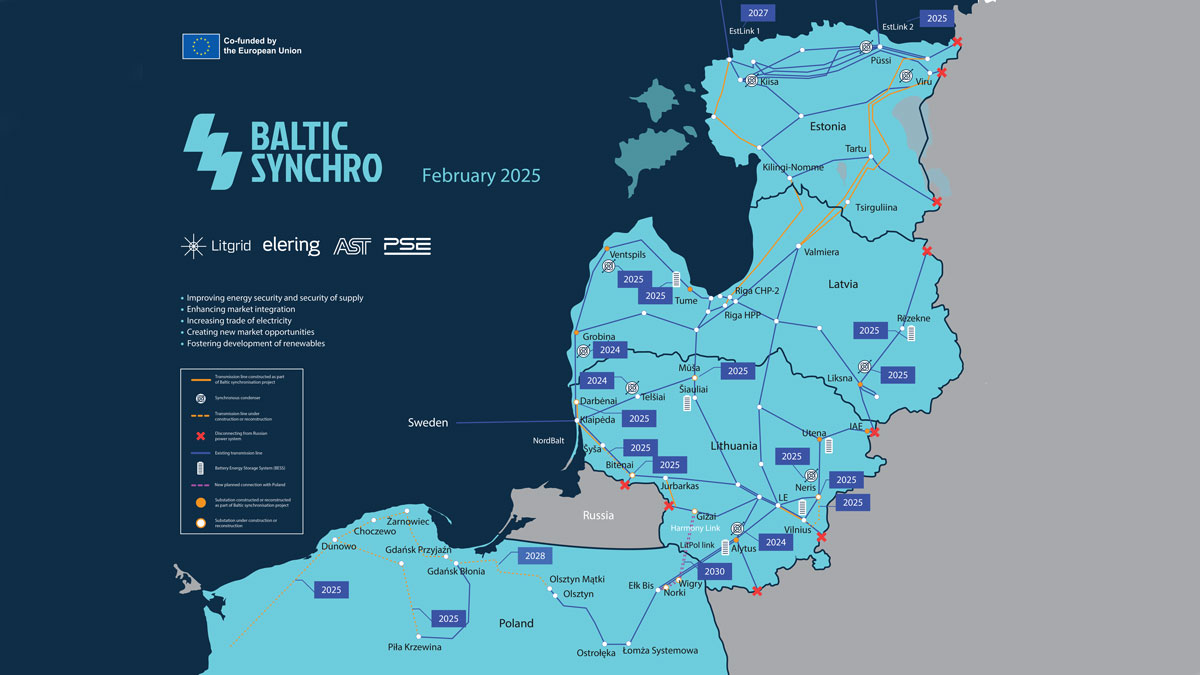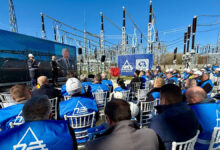Baltic States: New Chapter of Energy Independence and European Integration
From the first ten days of February 2025, Estonia, Latvia and Lithuania mark a turning point in their energy history by becoming fully independent from the power systems of Russia and Belarus.
This achievement, accomplished by synchronizing national grids with those of the European Union through Poland, is not only a technical change but also a symbolic victory over external influence, paving the way for an era of energy autonomy, transparency and security in the Baltic Sea region and, by extension, in the whole European space.
Historical and geopolitical context
In recent decades, the Baltic countries have had to deal with the legacy of the Soviet energy infrastructure, which kept their grids integrated into the BRELL system – a network in which the electricity frequency was centrally controlled by Russia. This dependence turned energy into a potential tool for political and economic pressure, exposing countries to major risks that could lead to energy supply disruptions. Since joining the European Union and NATO in 2004, these countries have sought to gradually free themselves from Russian influence, but the energy sector has until recently remained a bastion of dependence.
The process of synchronizing the Baltic and European grids has been a complex task, involving a concerted effort of all actors involved – from national governments to European institutions and investors. Thus, after the countries disconnected from the Russian-Belarusian frequency system on February 8, 2025, and on February 9 successfully began integration into the European synchronous zone through Poland, it can be said that a historic dream has materialized.
This flagship project has received political, technical and financial support unprecedented in the last 15 years. The European Commission has allocated more than EUR 1.23 billion from the Connecting Europe Facility, covering 75% of the investment costs, with additional investments, financed by the Recovery and Resilience Facility, to strengthen infrastructure in Latvia and Lithuania.
In total, the budget for the synchronization project amounts to EUR 1.6 billion, with EUR 1.2 billion funded by the EU, demonstrating the European Union’s strong commitment to ensuring energy independence for Member States.
Regional implications and impact on the European energy market
Synchronizing the Baltic networks with the European system has significant implications from several perspectives.
First of all, we can talk about security of supply, because giving up the BRELL system allows the Baltic States to have full control over their energy infrastructure, eliminating the risk of using energy as a political weapon. Security of energy supply is thus not only a benefit for the three countries but also strengthens the EU energy system as a whole.
Then, the integration of renewables, by adapting to European rules and standards, paves the way for the integration of renewable energy. This will help reduce long-term costs for consumers and promote sustainable development in the region.
In the future we can speak of market stability, because despite some initial fears of possible cost increases, calculations indicate that the impact on electricity prices is relatively modest.
In Latvia, for example, the average difference is estimated at around EUR 1 per month for an average consumption of 140 kWh, which the authorities consider to be “the price worth paying for independence and security”.
Reactions and challenges
Synchronizing the Baltic grids is undoubtedly a major achievement, but it is not without its challenges. As the BRELL disconnection date approaches and once synchronization is complete, officials and experts warn of potential disinformation campaigns orchestrated by Russia. These efforts have been stepped up in recent months, trying to sow panic and suggest that the transition to the European system could lead to blackouts or systemic failures.
There are also risks of cyber-attacks on critical infrastructure and of kinetic actions that could target underwater cables and critical installations. The authorities have taken steps to strengthen security, and the recent example of autonomous grid testing in Lithuania and Latvia confirms that the technical preparations are complete, and that the synchronization process will run smoothly.
Prospects for the future: The path to the European Energy Union?
Looking forward, the synchronization of the Baltic countries is an essential milestone in completing the European Energy Union. Catharina Sikow-Magny, European Coordinator for the Baltic Synchronization Projects, underlined the importance of continued collaboration between Member States in the region for the implementation of the next steps of the project. One notable project is the construction of the Harmony Link interconnector, a 700 MW line between Lithuania and Poland, scheduled to be completed by 2030. It will facilitate better integration of networks and strengthen the resilience of the entire European energy system.
This initiative is part of a multilateral European effort that began more than 15 years ago and has involved over 40 investment projects, helping to break the historical dependence on the Soviet system. So, synchronization is not just a technical change, but also a symbol of European solidarity and determination to build a secure, efficient and sustainable energy system.
Therefore, the disconnection of the Baltic countries from the BRELL grid and their full integration into the European energy system is a historic achievement, marking the end of an era of energy dependency and manipulation. This change, backed by substantial investment and high-level coordination, demonstrates how political, economic and technical efforts can transform the energy landscape of an entire region.
By adopting common European rules and strengthening critical infrastructure, Estonia, Latvia and Lithuania are not only securing their energy self-sufficiency but also becoming a success story for the EU as a whole. At a time when the diversification of energy sources and the integration of renewables are strategic imperatives, achieving synchronization paves the way to a future where energy security and market stability will be the pillars of sustainable development.
As the President of the European Commission, Ursula von der Leyen, said, “Today, history is being made: the Baltic States are moving towards energy independence.” And this courageous step will have positive reverberations not only at regional level, but for the European community as a whole reaffirming the values of freedom, sovereignty and cooperation that are essential in the modern era.







